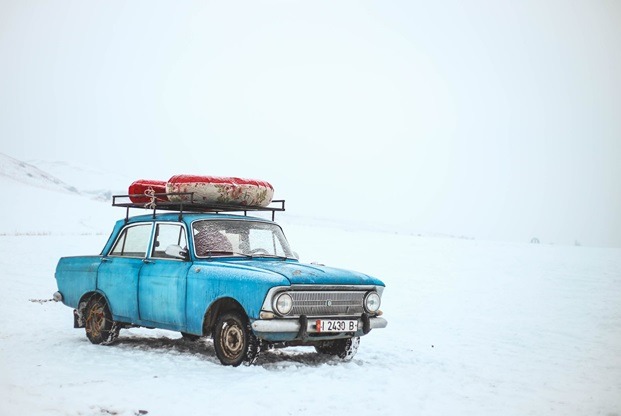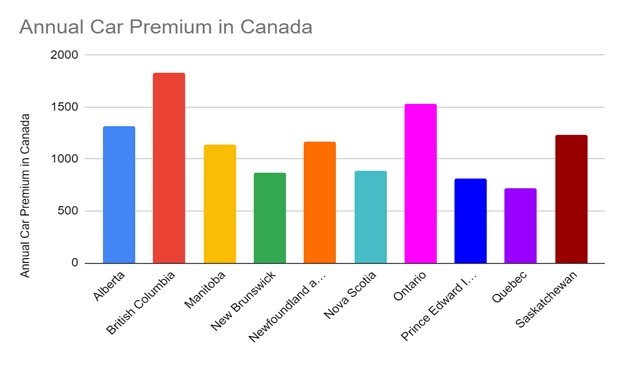The winter season is cuddle season. But even if we want to stay warm and dry, we are sometimes forced to drive on slippery roads. More often than not, it appears to be a white-knuckle ride. The heavy snowfalls and dark surroundings pose dangers to moving vehicles.
So, below are some car maintenance tips for safe driving during winter.
Change Tires
Have you read Stephen King’s book Misery? Surely, you don’t want to go through Paul Sheldon’s experience. Who would want to crash his car amidst the heavy snowfall and get rescued by Annie Wilkes? So, it is high time to use tires appropriate for winter.
Using winter or snow tires can improve the stopping and handling function of your car. In general, these tires are more expensive than the typical tires. But, they guarantee better driving performance with their tread patterns and rubber compounds. Your car will become quieter and effective on frozen and slippery roads.
In recent years, car insurance claims were lower for vehicles with winter tires. For example, auto insurers found that winter claims decreased by 6% in 2018. The decrease translates into over 1000 claims avoided.
In Ontario, some insurance companies provide premium discounts for those installing winter tires. One of these is brokerlink.ca, which can support you in finding car insurance suitable to your needs.
But, you still have to be careful when choosing and changing tire combinations. You may go to vendors like Automotive Stuff that offer packages with winter tires mounted on a new wheelset. Whatever kind or combination of tires you choose, always check if there is enough tread on them. Keep in mind that worn tires are more likely to cause accidents on winter roads.
Check the Tire Pressure
Even if you use winter tires, their pressures are still affected by the cold weather. For every decrease of 10 degrees Fahrenheit, tires lose a pound of pressure. Driving with underinflated tires is as dangerous as hydroplaning on water. This is because these tires do not bite through the snow down to the concrete or asphalt road.
Prevent Your Car from Rusting
Snow and ice do not only block your vision and make your driving difficult in snowy conditions. They can also get into your car controls, especially the brake lines. That is why car crashes are common in winter. Statistics show that car accident probability increases by 3-5% in winter. Heavy snowfall causes the majority of winter accidents, followed by light snowfall.
Moreso, snow can affect the door and window frames and body panels of your car. To avoid your car from rusting, rinse out its undercarriage or the supporting body. You can have it done at a car wash shop or home using a garden hose.
You may also install an electronic rust prevention device. It sends a small electric current in conjunction with special coatings. It may also pass through the car frame. Yet, some people express skepticism about its effectiveness.
Be Careful with the Windows and Windshield
Avoid rolling down your car windows in freezing temperatures. It is a must that you thaw the ice on the windows and windshield if allowed to. If not, warm your car up for at least 30 minutes before you roll your car windows down. If you do so right away, the water that gets into the car window seals, and the doors will freeze. It can cause leaky windows and affect your car’s functions.
Check the Windshield
You must check your wipers at the first sign of snowfall. You must use new wiper blades for more efficient wiping out of snow and ice. A yearly change of wipers is best, but it is costly.
With that, you must be diligent in the regular cleaning of the windshield. Do it with a window cleaner or vinegar and a clean piece of cloth. Scrub the windows up. You may also clean the rubber part of the wiper blades. It will keep your front view clear amidst heavy snowfall.
Stop or At Least Reduce Car Corrosion
Salty winter is one of the most primary causes of corrosion. In the 1970s and 1980s, many Japanese branded cars corroded after a few winters. As such, look for any scratches, dings, and other damages that get into the paint. These parts need some repainting before salt mixtures get into them.
You can fix it yourself, but it is better to seek help from a professional repair. If you want to do it yourself, acetone or rubbing alcohol is effective. From there, coat the damaged parts. You can use nail polish or touch-up paint for coating. To avoid rusting, wash your car often.
Always Check Your Car’s Antifreeze
Newly produced cars have coolants that last for five years or 150,000 miles, or even longer. You must follow your car’s service schedule and read the manual. If you miss a scheduled service or doubt your coolant’s capacity, go to the nearest car mechanic. Have it flushed and filled with a compatible coolant for refilling. You may also buy a tester from a car parts store to check your coolant’s capacity.
Ensure that Your Car Battery is Fully Loaded
Winter decreases battery life, especially for cars parked outdoors. It is not easy when your battery drains, and you hear nothing when you try to hit the ignition. It is even harder when you are in the middle of slippery roads. Although repair shops charge reasonable prices, the hassle and some parts are costly.
Always Bring Your Car Repair Kit
Knowing how to do basic repairs for your car is a plus. As such, you must always bring your car repair kit anywhere you go.
Flat tires and other damages can be accidental and unexpected. The probability is higher when driving on snowy roads. Chances are, there are no nearby car repair shops, and it will take hours before they arrive. Don’t forget to bring your flashlight.
Wipe or Wax the Headlights and Taillights
The surroundings are darker during inter. That is why you should ensure that the lights from your car are enough for safe driving. Clean the dirt and wax the lens of the headlights and taillights. Let it dry and repeat the process. Do it as often as you can, so it will be easier to remove the ice particles and dirt on the lens.
Car Insurance
Having car insurance for your vehicle is a must in Canada. It may be costly in some provinces, but its coverage is enough to cover different types of damages. It helps if you are not done with your car amortization.
Canadian insurers observe a 49% increase in insurance claims in winter. The average premium in Alberta and Ontario is higher. But, the minimum coverage is $200,000. In Quebec, the average premium is about $700. Meanwhile, the minimum coverage is only $50,000 since the premium is cheaper.
This insurance covers the repair or replacement of your vehicle. It includes theft, fire, malicious damage, collision, and weather-related damage. Imagine your car destroyed by floods. You have no one to turn to or ask for compensation. It is worse when you haven’t finished your monthly amortization payment. Car insurance guarantees financial protection against damages from humans or nature.
Driving in icy conditions can be inconvenient. Car accidents and damages are possible. Yet, proper car maintenance can help you and your car get through the freezing weather. Plus, with auto insurance, you can have adequate financial protection.



